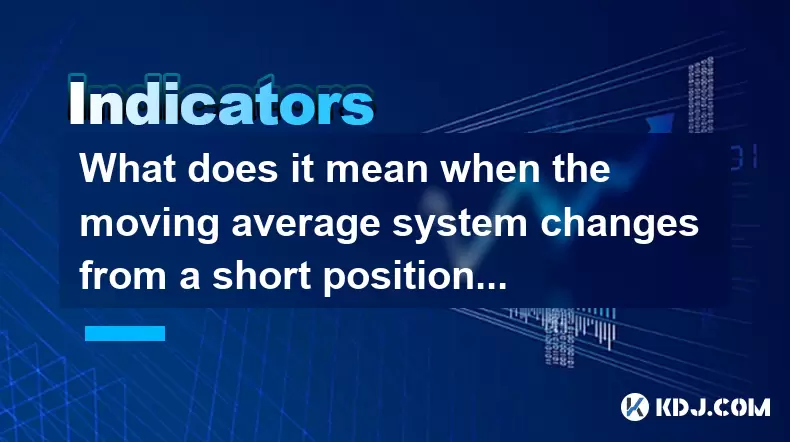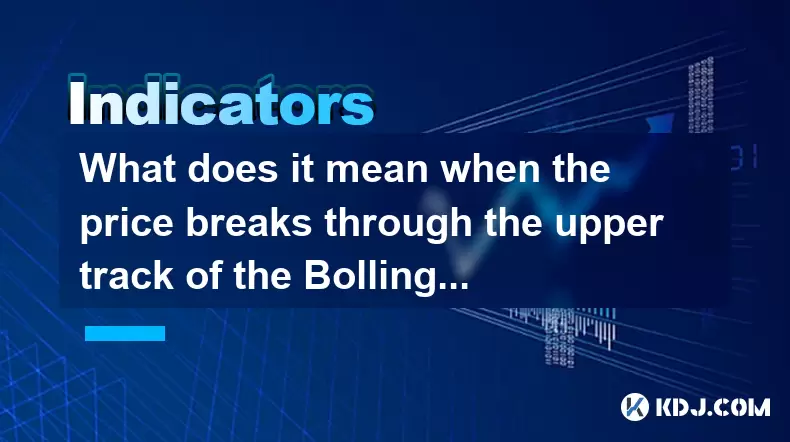-
 Bitcoin
Bitcoin $117500
-0.66% -
 Ethereum
Ethereum $3760
-1.24% -
 XRP
XRP $3.087
-2.54% -
 Tether USDt
Tether USDt $0.9999
-0.01% -
 BNB
BNB $803.6
-4.03% -
 Solana
Solana $180.3
-4.15% -
 USDC
USDC $0.9998
-0.01% -
 Dogecoin
Dogecoin $0.2218
-4.92% -
 TRON
TRON $0.3366
3.71% -
 Cardano
Cardano $0.7785
-3.73% -
 Hyperliquid
Hyperliquid $42.90
-4.75% -
 Sui
Sui $3.797
-7.45% -
 Stellar
Stellar $0.4165
-2.32% -
 Chainlink
Chainlink $17.65
-4.17% -
 Bitcoin Cash
Bitcoin Cash $561.0
-3.86% -
 Hedera
Hedera $0.2611
-4.54% -
 Avalanche
Avalanche $24.33
-7.02% -
 UNUS SED LEO
UNUS SED LEO $8.972
0.06% -
 Litecoin
Litecoin $107.6
-2.79% -
 Toncoin
Toncoin $3.254
-1.84% -
 Shiba Inu
Shiba Inu $0.00001306
-4.69% -
 Ethena USDe
Ethena USDe $1.001
0.00% -
 Uniswap
Uniswap $10.10
-4.83% -
 Polkadot
Polkadot $3.902
-4.63% -
 Monero
Monero $315.1
-2.57% -
 Dai
Dai $1.000
0.02% -
 Bitget Token
Bitget Token $4.499
-2.53% -
 Pepe
Pepe $0.00001145
-7.38% -
 Cronos
Cronos $0.1479
6.07% -
 Aave
Aave $281.3
-4.07%
What does it mean when the moving average system changes from a short position to a sticking position?
A shift from short to sticking position on a moving average suggests weakening downtrend momentum and potential trend reversal, often signaling traders to watch for breakout opportunities.
Jul 29, 2025 at 05:01 am

Understanding the Moving Average System in Cryptocurrency Trading
The moving average (MA) system is one of the most widely used technical analysis tools in the cryptocurrency market. Traders rely on moving averages to smooth out price data over a specific time period, helping them identify trends and potential reversal points. The system operates by calculating the average price of an asset—such as Bitcoin or Ethereum—over a defined number of periods, which could be minutes, hours, or days. When traders refer to a short position, they are typically describing a scenario where the price is below a key moving average line, signaling bearish momentum. A sticking position, on the other hand, refers to a condition where the price action consolidates tightly around a moving average, suggesting indecision or a potential shift in market sentiment.
What Constitutes a Short Position in MA Analysis?
A short position in the context of a moving average system occurs when the current market price of a cryptocurrency is consistently trading below a significant moving average, such as the 50-day or 200-day MA. This positioning often reflects sustained selling pressure and a prevailing downtrend. For example, if Bitcoin’s price has been declining and remains under the 50-day MA for several trading sessions, technical traders interpret this as a signal to maintain bearish positions. The moving average acts as a dynamic resistance level in this case. When the price fails to close above the MA, it reinforces the strength of the downtrend. Traders may use additional indicators—like the Relative Strength Index (RSI) or MACD—to confirm oversold conditions or potential exhaustion of the downward momentum.
Defining the Sticking Position in Price-Moving Average Dynamics
A sticking position emerges when the price of a cryptocurrency begins to hover closely around a key moving average line, showing minimal deviation above or below it. This behavior indicates that the market is in a state of equilibrium, where neither buyers nor sellers are gaining control. It often follows a prolonged downtrend and may signal a transition phase. The term "sticking" reflects the visual appearance on a chart where the price appears to be “glued” to the moving average. This phase can last for hours or days in volatile crypto markets. During this period, volume analysis becomes critical. A decline in trading volume may suggest weakening momentum, while rising volume could foreshadow a breakout in either direction.
Interpreting the Transition from Short to Sticking
When the moving average system shifts from a short position to a sticking position, it signifies a potential change in trend dynamics. This transition suggests that the downward pressure is losing strength and that buyers are stepping in to defend the price level near the moving average. To identify this shift, traders should monitor several factors:
- Observe whether the price starts forming higher lows while remaining near the MA.
- Check for candlestick patterns such as doji or spinning tops, which reflect market indecision.
- Look for volume contraction, which often accompanies consolidation phases.
- Confirm with oscillators like the Stochastic RSI whether the asset is exiting oversold territory.
This change does not automatically imply a bullish reversal, but it does indicate that the bearish trend is stalling. The moving average, once a resistance, may now act as a support level if the price holds above it during retests.
How to Trade the Short-to-Sticking Transition: Step-by-Step Guide
Traders can capitalize on this transitional phase by following a structured approach:
- Identify the key moving average: Use the 50-day or 200-day MA depending on your trading timeframe. Ensure the price was clearly below it during the short phase.
- Monitor price behavior near the MA: Watch for multiple touchpoints where the price approaches the MA but fails to break significantly below it.
- Confirm consolidation: Look for tight price ranges, small candle bodies, and reduced volatility indicators like Bollinger Band width.
- Wait for confirmation signals: A close above the MA accompanied by rising volume can serve as a trigger for long entries.
- Set stop-loss orders: Place stops just below the recent swing low or under the moving average to manage risk.
- Use position scaling: Enter partial positions during the sticking phase and add more if a breakout occurs.
This strategy is particularly effective in high-cap cryptocurrencies like Bitcoin and Ethereum, where moving averages tend to have stronger predictive power due to broader market participation.
Common Misinterpretations and Risk Factors
One common mistake is assuming that a sticking position always leads to a bullish reversal. In reality, the price may resume its downtrend after a brief consolidation. False breakouts above the moving average are frequent in low-liquidity altcoins. Another risk is overreliance on a single indicator. While the moving average provides valuable insights, it should be used in conjunction with volume, support/resistance levels, and broader market context. For instance, a sticking position during a bear market rally may simply be a pause before the next leg down. Additionally, different timeframes may show conflicting signals—what appears as a sticking position on the 4-hour chart might still be part of a short position on the daily chart.
Frequently Asked Questions
Can a sticking position occur above a moving average?
Yes, a sticking position can occur both above and below a moving average. When the price sticks above the MA, it often reflects bullish consolidation, where buyers maintain control. This scenario is common after an uptrend and may precede further gains.
Does the length of the moving average affect the significance of the sticking position?
Absolutely. A sticking position near the 200-day MA carries more weight than one near a 10-day MA due to its broader market relevance. Long-term MAs are watched by institutional traders and often act as stronger psychological and technical levels.
How long should a price stick to the moving average before it’s considered significant?
There is no fixed duration, but a sticking phase lasting at least 3–5 candlesticks on the relevant timeframe (e.g., 4-hour or daily) is generally considered meaningful. The longer the consolidation, the higher the potential impact of the subsequent breakout.
Is the sticking position more reliable in certain cryptocurrencies?
It tends to be more reliable in high-market-cap cryptocurrencies like BTC and ETH due to their deeper liquidity and stronger adherence to technical patterns. Low-cap altcoins with erratic volume may exhibit false sticking behavior due to manipulation or low trading activity.
Disclaimer:info@kdj.com
The information provided is not trading advice. kdj.com does not assume any responsibility for any investments made based on the information provided in this article. Cryptocurrencies are highly volatile and it is highly recommended that you invest with caution after thorough research!
If you believe that the content used on this website infringes your copyright, please contact us immediately (info@kdj.com) and we will delete it promptly.
- Bitcoin Price Drop: Navigating the Dip with Corporate Strategies
- 2025-07-30 07:30:12
- BNB's Bullish Cycle: ChatGPT Weighs In on the Future
- 2025-07-30 06:50:12
- XRP's Wild Ride: Open Interest, Price Crash Fears, and What's Next
- 2025-07-30 07:50:12
- SEC Greenlights In-Kind Creations: A Game Changer for Bitcoin ETPs?
- 2025-07-30 07:50:12
- Arbitrum (ARB) Price Prediction: Navigating the Ups and Downs of the Best ETH Eco
- 2025-07-30 06:50:12
- Ethereum, Ruvi AI, Presale: The Next Big Thing in Crypto?
- 2025-07-30 07:30:12
Related knowledge

What does it mean when the EMA combination crosses upward for the first time after sideways trading?
Jul 28,2025 at 03:43pm
Understanding the EMA and Its Role in Technical AnalysisThe Exponential Moving Average (EMA) is a widely used technical indicator in cryptocurrency tr...

What does it mean when the price breaks through the upper track of the Bollinger Band but the RSI is overbought?
Jul 30,2025 at 03:35am
Understanding Bollinger Bands and Their Upper TrackBollinger Bands are a widely used technical analysis tool developed by John Bollinger. They consist...

What signal does the ROC send when it rises rapidly from a low level and breaks through the zero axis?
Jul 27,2025 at 10:15am
Understanding the Rate of Change (ROC) IndicatorThe Rate of Change (ROC) is a momentum-based oscillator used in technical analysis to measure the perc...

What does it mean when the moving averages are glued together and a gap appears?
Jul 29,2025 at 07:49pm
Understanding Moving Averages in Cryptocurrency TradingMoving averages are among the most widely used technical indicators in the cryptocurrency tradi...

What does it mean when TEMA breaks through the long-term downward trend line?
Jul 29,2025 at 02:50pm
Understanding the Role of Smart Contracts in Decentralized Finance (DeFi)Smart contracts are self-executing agreements with the terms of the agreement...

What does it mean when the price breaks through the double bottom neckline and the moving averages are arranged in a bullish pattern?
Jul 28,2025 at 10:57am
Understanding the Double Bottom PatternThe double bottom is a widely recognized reversal chart pattern in technical analysis, particularly within the ...

What does it mean when the EMA combination crosses upward for the first time after sideways trading?
Jul 28,2025 at 03:43pm
Understanding the EMA and Its Role in Technical AnalysisThe Exponential Moving Average (EMA) is a widely used technical indicator in cryptocurrency tr...

What does it mean when the price breaks through the upper track of the Bollinger Band but the RSI is overbought?
Jul 30,2025 at 03:35am
Understanding Bollinger Bands and Their Upper TrackBollinger Bands are a widely used technical analysis tool developed by John Bollinger. They consist...

What signal does the ROC send when it rises rapidly from a low level and breaks through the zero axis?
Jul 27,2025 at 10:15am
Understanding the Rate of Change (ROC) IndicatorThe Rate of Change (ROC) is a momentum-based oscillator used in technical analysis to measure the perc...

What does it mean when the moving averages are glued together and a gap appears?
Jul 29,2025 at 07:49pm
Understanding Moving Averages in Cryptocurrency TradingMoving averages are among the most widely used technical indicators in the cryptocurrency tradi...

What does it mean when TEMA breaks through the long-term downward trend line?
Jul 29,2025 at 02:50pm
Understanding the Role of Smart Contracts in Decentralized Finance (DeFi)Smart contracts are self-executing agreements with the terms of the agreement...

What does it mean when the price breaks through the double bottom neckline and the moving averages are arranged in a bullish pattern?
Jul 28,2025 at 10:57am
Understanding the Double Bottom PatternThe double bottom is a widely recognized reversal chart pattern in technical analysis, particularly within the ...
See all articles

























































































